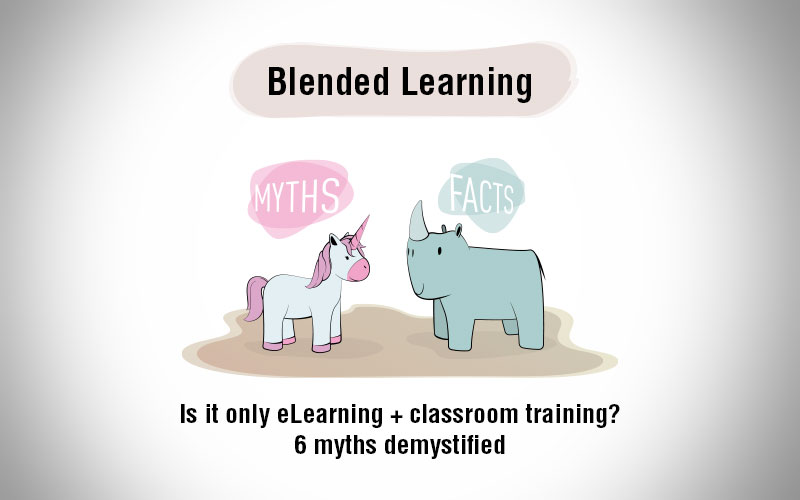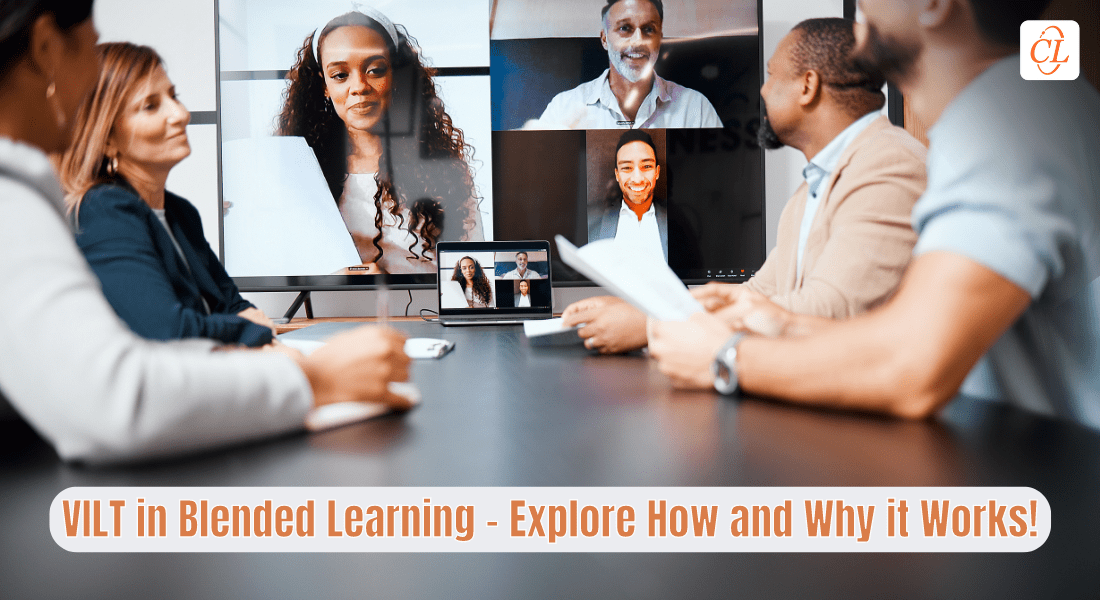Blended Learning for Corporate Training – A Beginner's Guide
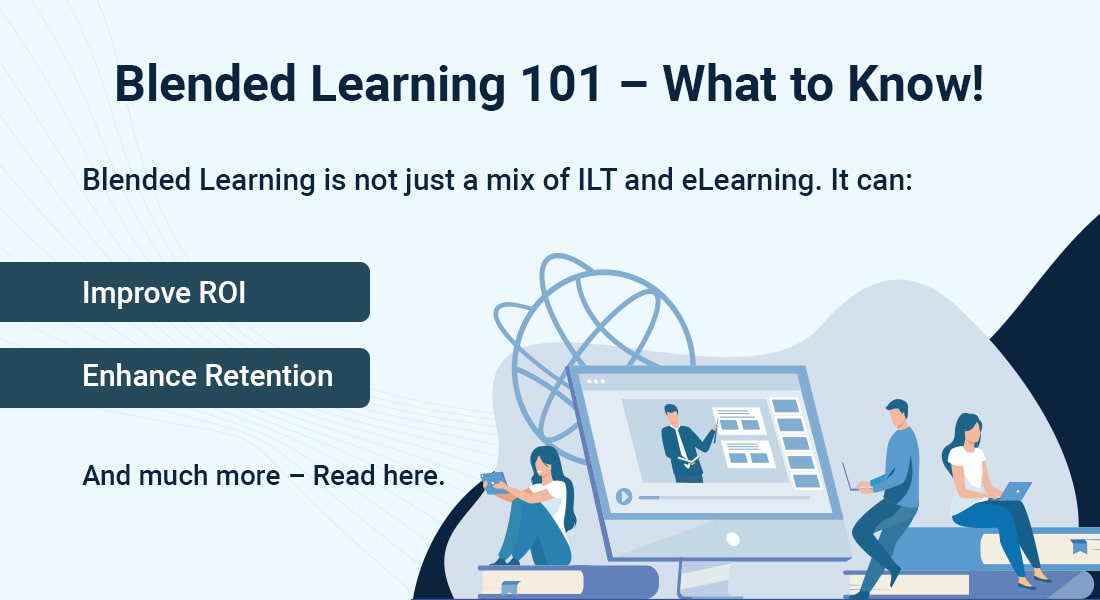
Imagine what it would be like to be back in the classroom attending a physical training session. Not happening anytime soon. If you are open to suggestions, however, blended learning for corporate training is something you can try.
Blended Learning 101 – A Quick Glance
Blended Learning = ILT + eLearning + Performance Support Benefits:- Helps Beat the Forgetting Curve
- Responsive to VARK Learning Styles
- Helps Adapt to New Technology
- Enhances ROI
- Dependence on technology can be an issue for those who develop the course and those who receive it.
If you are not very clear with what blended learning is, this blog is for you. I have tried to strip-down blended learning to its barest minimum and explain what it is, why it is relevant to corporate training, and what it entails for the future of corporate L&D in the COVID-19 era. So, keep your eyes glued to the screen for the next 10 minutes or so, and I can assure you, you will have a brilliant new perspective on providing corporate training using the best of both worlds – in-person and online training.
Don’t let your learners forget their valuable learning – click to know how.
What is Blended Learning (and Why it Calls For Your Attention)?
Blended learning, as is clear from the name itself, is a blend of two or more learning/training formats and approaches. In corporate L&D, blended learning is a hybrid of classroom training and eLearning, with a little bit of performance support thrown in. Blended learning is a perfect example of the whole being more than the sum of its parts, providing a lot more benefits and being much more effective than when learning formats are used by themselves.
It also seems that the impact of COVID-19 on corporate training will last longer than was initially thought. So maybe bringing employees back to classrooms for training is not the best option after all. So all said and done, it’s safe to assume that blended learning is here to stay.
But why exactly is blended learning garnering so much attention from the L&D community? The answer lies the science behind it.
Let us look at some of the major benefits of blended learning and see what the science has to say.
Benefits of Blended Learning You Cannot Ignore
1. Helps Beat the Forgetting Curve
Blended learning implicitly addresses one of the major concerns with respect to learning – will all learners remember the information from the training equally well? Research suggests that mixing two different formats of learning content ensures better understanding and retention.
According to Edgar Dale’s Cone of Learning, learners, 2 weeks after learning something, retain only 10% of what they read but 80% of what they do. This implies a more hands-on, practical approach helps remember learned content. This is also the rationale behind blended learning – to mix in-classroom training with different eLearning formats for better training outcomes.
2. Responsive to Different Learning Styles
Most organizations have a varied palette of training requirements – ethics and compliance training, product training, sales training, CRM and other software training, end-user software training, information security and IT training, environmental health and safety training, code of conduct, etc. Not all of these will appeal equally to all learners, especially if presented in the same format.
Different learners prefer using different styles of learning. According to research, there are four major styles of learning – Visual, Auditory, Reading-Writing and Kinesthetic (VARK) styles of learning – for different types of learners. A visual learner will learn better through pictures, infographics, and videos; kinesthetic learners learn better from hands-on exercises and interactive learning situations.
Thanks to blended learning, providing the choice to the learners is simple, and given that it caters to different learning styles, the chance of more learners retaining their learning also dramatically increases.
3. Helps Adapt to New Technology
Blended learning is instrumental in providing learners with a sense of freedom over their own learning. Not having a fixed mode of training delivery means that learners can choose how they want to learn and on what device. Blended learning can help reduce digital immigrants’ apprehensions about new technology and smoothen the path to adaptation for them. For those worried about the technical complexities of mobile devices, blended learning is a boon.
Most corporates have in-classroom training as part of their L&D program. Blended learning seeks to connect that in-classroom training with one or more of the available remote/digital training formats so that learners can learn from both the methods – attend live classroom or virtual instructor-led training sessions when they are available, followed by small mobile learning modules on their smartphones.
4. Improves Organization ROI
Every organization anticipates a return on their investments, whatever they may be. When it comes to corporate L&D, pinning down the Return on Investment (ROI) is difficult. And since training is one of the factors that contribute to ROI, it becomes hard to understand if there has been any actual development or if corporate training budget is a circus.
While it is true that effective training helps improve ROI, blended learning makes sure that all learners retain a significant part of their training. It is important to remember that blended learning does not fall from a tree but is designed by L&D professionals. Experienced eLearning vendors can develop effective modules for blended learning and help host them on the organizational LMS for learners to access. The learning modules that the learners use, are based on the organizational goals and learning objectives. This way the training will help in achieving the organizational goals, resulting in improvement in ROI.
Recipe for a Perfect Blend
No rocket science here!
- Behind every training, there is a well-established objective. So, the first thing that you must do is understand the specific training requirement for the organization.
- Once done, you need to gather and organize all relevant materials that you will need for creating the perfect blend. This can include handouts, old PPTs, old Flash-based courses (if you have a lot of them, Flash to HTML5 conversion may be something to look at), PDFs, worksheets, etc.
- Understand your target audience. Look at the demographics – are they old or young, what is their educational background, do they all speak the same language (or will eLearning translation and localization be required), etc.
- Assuming you already have a Learning Management System in place for hosting training courses, having the correct learning technology infrastructure is important.
- Finally, it is time for you to organize and accommodate content in terms of what will go into eLearning, and what goes into classroom training.
4 Popular Blended Learning Models for Corporate Training
We’ve gone through the “Why?” of blended learning and a little bit of the prework you need to do. Let’s now come to the “How” of blended learning with four highly popular blended learning models that corporate training loves to implement.
1. Rotational Model
This model is a perfect fit for those who are implementing digital training for the first time, although I doubt that COVID-19 has left any organization yet to ‘start’ online training. Nonetheless, the rotational model has its advantages. It follows a fixed schedule and a fixed sequence of training formats, and the learners rotate through these fixed schedules of training.
The Rotational model makes blending different formats easier, and also facilitates effective course tracking and analytics, thanks to its orderly framework. The Flipped classroom (a sub-model of the Rotational model) is a reverse (flip) of traditional classroom training, with learners going through online training before coming to the classroom (or VILT) where they can apply their learning.
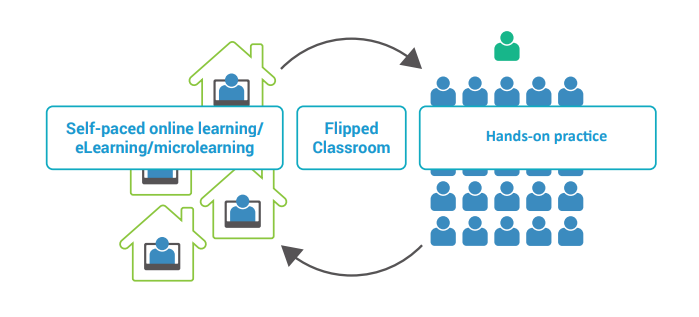
2. Flex Model
Unlike the Rotation model, the Flex model offers a customized training schedule mainly based on online training formats, particularly eLearning. Other training formats are used to support or complement online training, along with collaborative learning activities and customized interventions.
A perfect example of Flex model would be product training where learners learn all about the features of a product through an eLearning course, and follow it up with in-classroom product demonstrations.
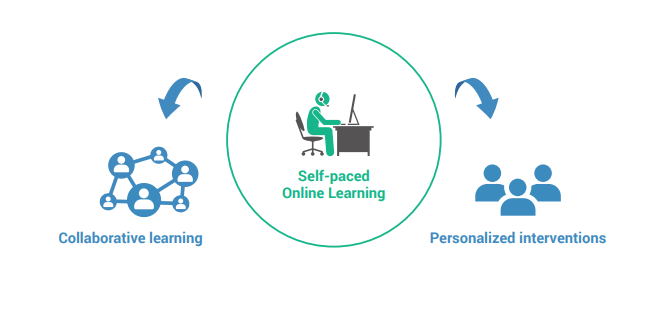
3. Enriched Virtual Model
This model shares certain similarities with the Flex model – it too includes online training as a major training component; however, the learners go through a scheduled instructor-led classroom session as the model recognizes the vital role of instructor intervention.
The Enriched Virtual Blended Learning model mandates that learners go through a VILT or ILT session in order to implement and dive deep into their learned knowledge. This enables peer-learning and critical reflection as well as experiential learning activities. Leadership training is best provided using this model.
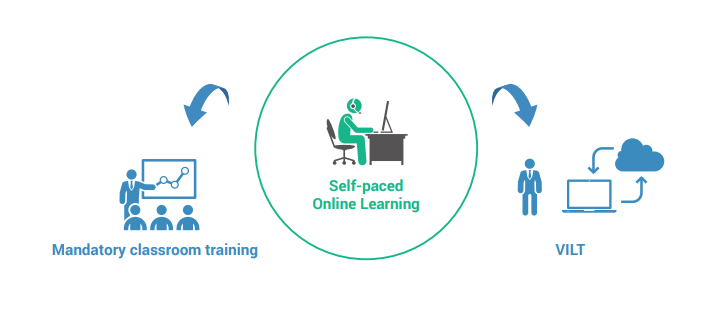
4. À La Carte Model
In the À La Carte Model of blended learning, the majority of training is conducted in the classroom by an instructor – including the theory and main training content – supplemented by online training. For learners whose job describes practical implementation of what they have learned, À La Carte Model is the perfect fit.
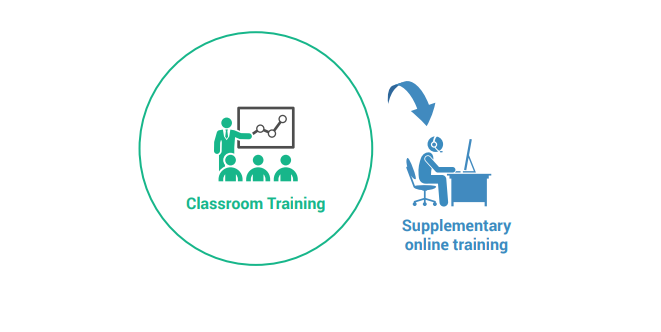
What’s the Challenge?
If it is too good to be true, chances are it is not.
In the case of blended learning, it actually is true. However, it does come with a certain challenge.
Blended learning is very dependent on technology. This can have dual consequences. First, for course designers and developers, building a blended learning program can be challenging, especially if the target audience and their preferences are unknown. Making courses responsive for all devices can also become resource heavy, as well as put a load on the trainers/SMEs.
Secondly, despite being suitable for all types of training, blended learning may not produce the same type of result for all of them, simply because not all types of learners can adapt at the same pace to a new technology when introduced. So technology can be a barrier for both the parties in some cases.
Wrapping Up!
Blended learning is an excellent and innovative way of ensuring that learning permeates all the cracks in a learner’s cognition, and leads to greatly positive outcomes in terms of ROI and organizational growth. Sure, there are a couple of drawbacks, but looking closely, the benefits greatly outweigh the challenges.
While you ‘blend’ everything you learned so far, let me introduce you to 2021’s top eLearning trends in this handy eBook.



